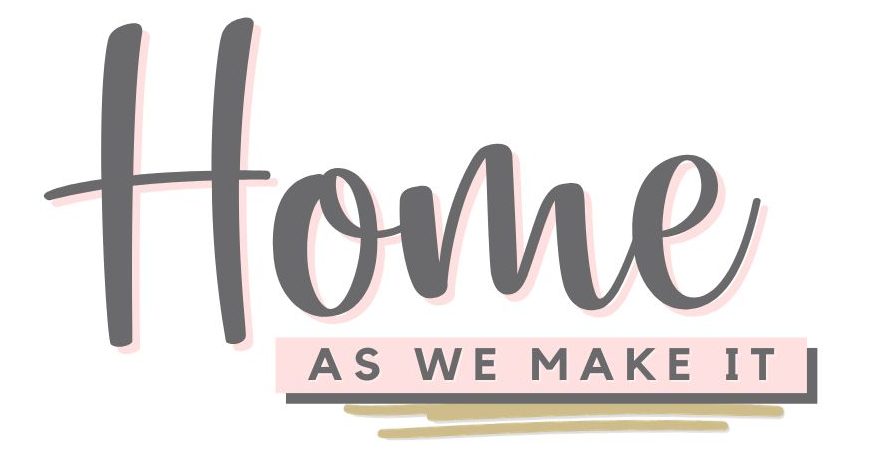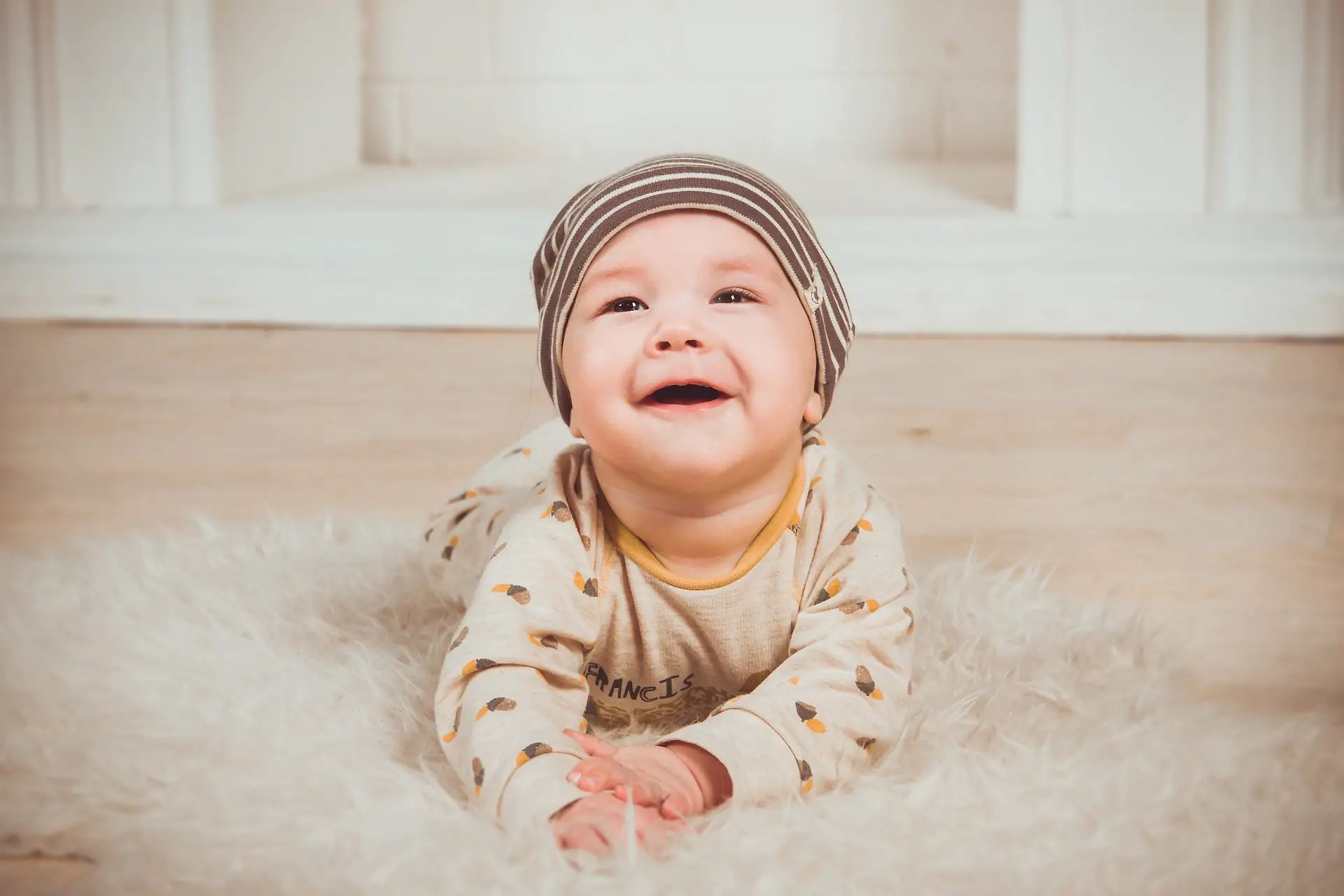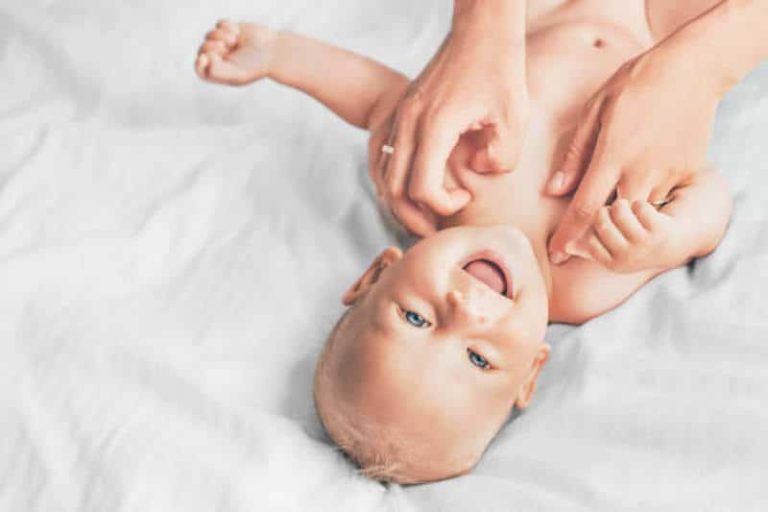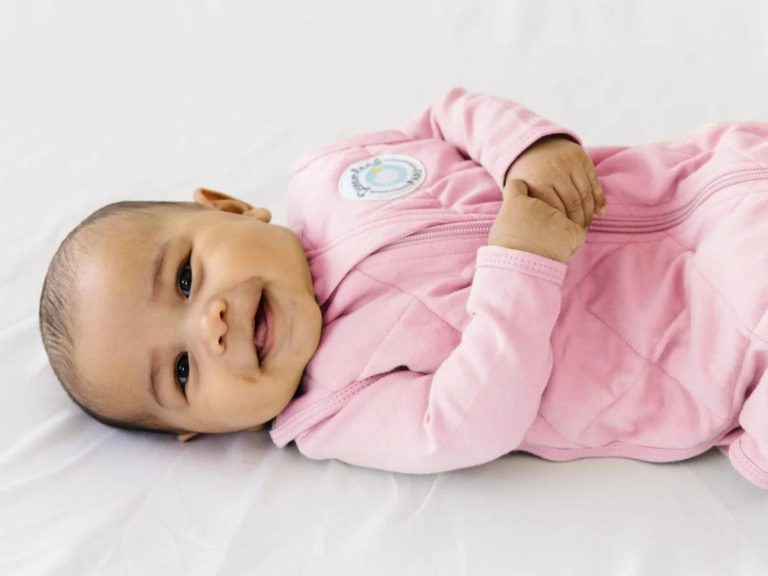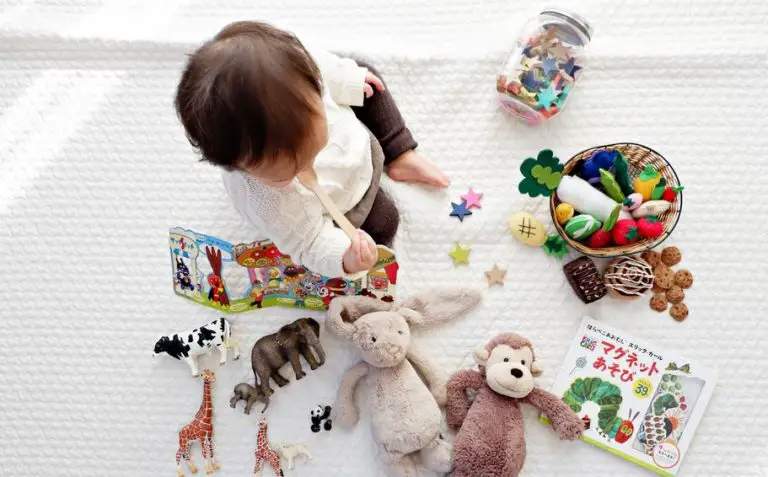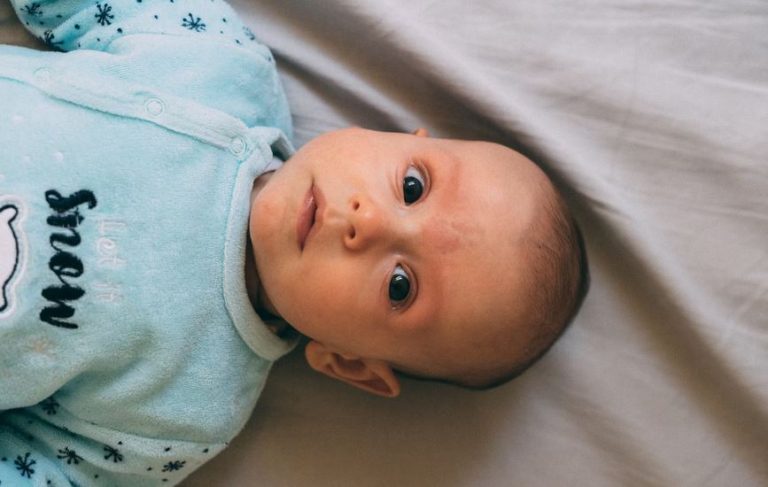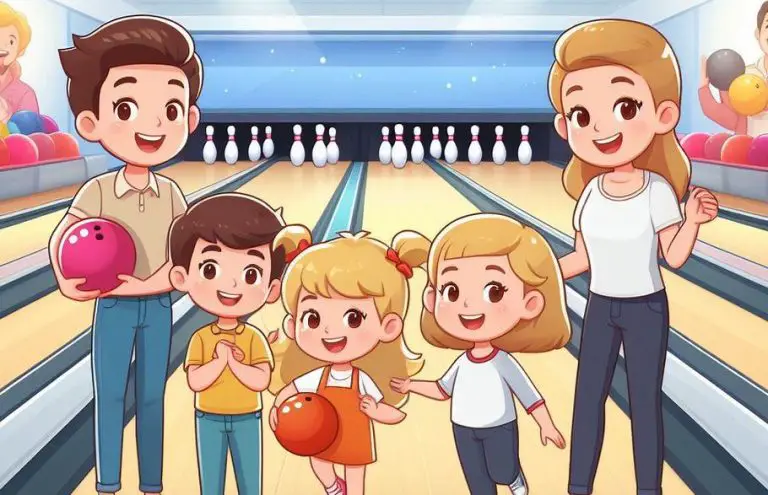3 Months Baby Development. What You Need To Know
4-month-old baby development →
Note: This post may contain affiliate links, which means if you buy from my link I might make a small commission. This does not affect the price you pay. See the full affiliate disclosure here.
It may not be as obvious to you but your baby has gone a long way since their baby phase. As part of the 3 months baby development, they are now more aware of themselves and their surroundings and their nervous system has matured significantly.
And in this post, we’re about to explain how these changes affect your baby and yourself.
What to expect from 3-month-old babies?
Physical growth
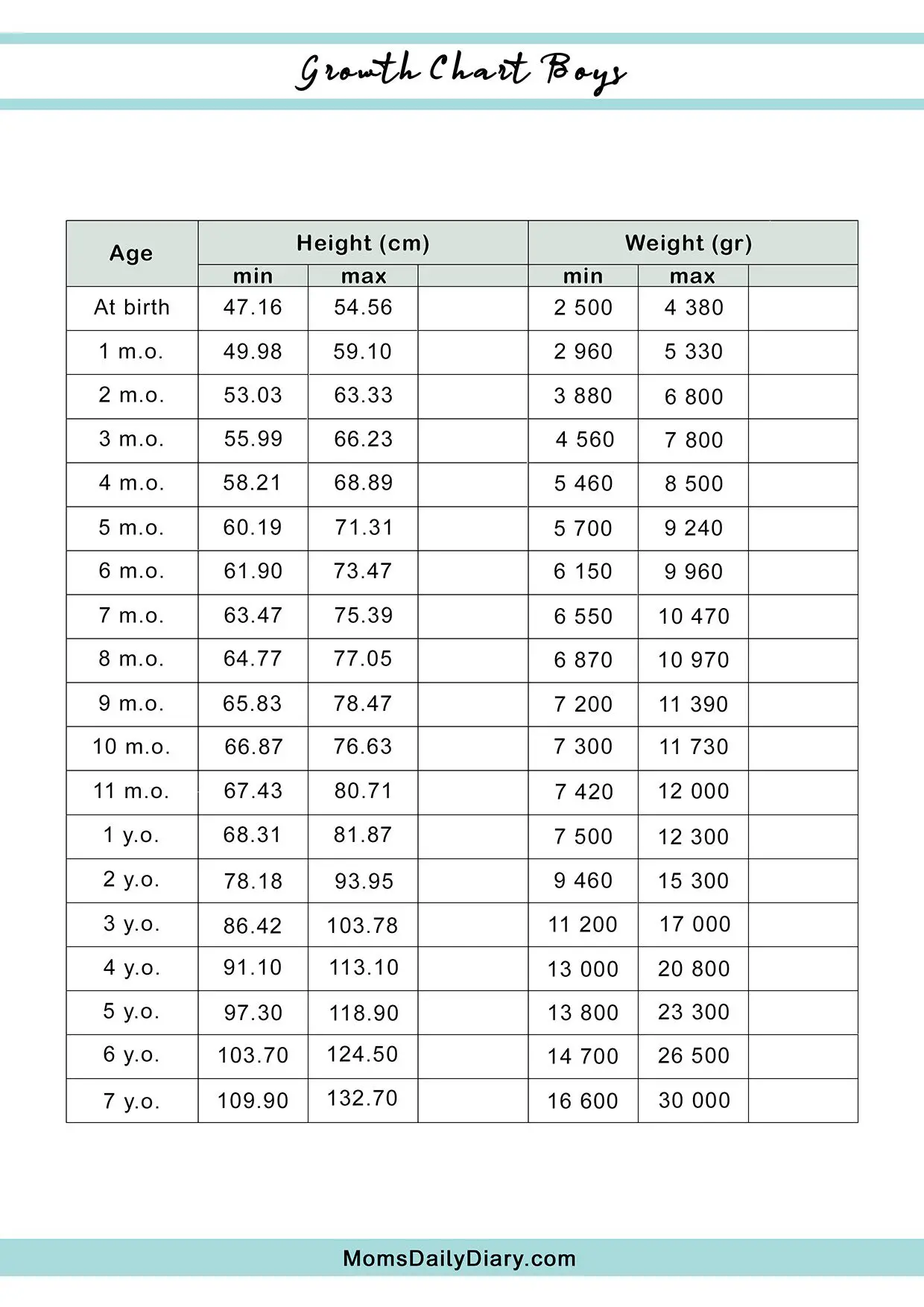
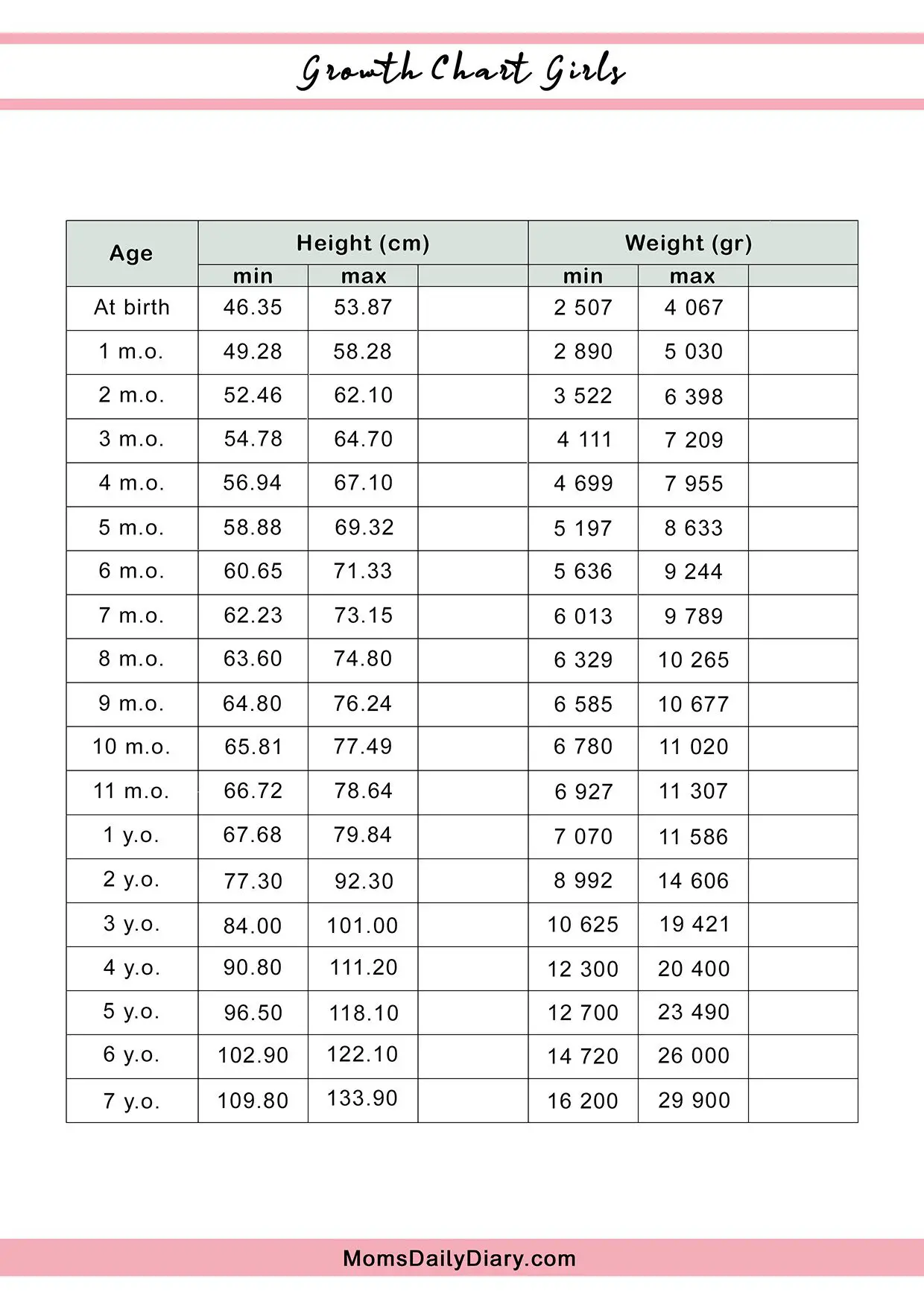
You know very well that kids are different. Just like grown-ups, they can be tall or short, slender or chubby. A big part of it comes from the family genes.
After their 3rd month, their growth rates usually slow down a bit. But if you think your baby has gained too much or not enough, talk to their healthcare provider before jumping to conclusions. What is important is that they maintain a stable rate between weight and height.
Feeding
You may hear of people feeding their babies solid foods as early as 3 months old.
According to the American Academy of Pediatrics and the World Health Organization, however, this is still too early.
You would need to wait at least one more month for their digestive system to mature further. And if your baby is entirely breastfed, your best option is to wait until the baby’s 6th month.
Sleep
After week 12, your infant’s nervous system should start to mature more noticeably.
How? Well, for one, they won’t get startled so easily. And with the increased food portions to keep them full, this often means that you can finally get these 6-7 hours of uninterrupted sleep at night (while the baby has 7-9 hours of night sleep).
During this transition to all-night sleep, your baby may wake up a few times and cry out. Before heading out to comfort them, be sure to wait about 30 seconds. More often than not, the baby may go back to sleep on their own. However, if you rush into the nursery, they may not doze back off so easily.
As part of their 3 months baby development, you should also consider applying a nap routine. In most cases, the routine establishes itself.
Usually, 3-month-old babies take 3-5 naps a day, lasting 1 to 3 hours each. Spread these out between the feedings.
Pro tip: Babies’ sleep comes in cycles. So it will be easier for you to put your baby to sleep 60 or 90 minutes after feeding.
Be sure to keep the last nap before bedtime short (up to an hour) so they won’t have a hard time falling asleep for the night.
Keep in mind that the third month still poses a risk of SIDS. So make sure your baby sleeps on their back and avoid keeping stuffed toys, bumpers, and blankets in the crib. The American Academy of Pediatrics also recommends that you continue to room-share (not bed-share!) until the baby is at least 6 months old.
Motor skills and head control
By now, your little one should be able to hold their head steadily when you hold them, with little or no wobbling. The same goes for holding their head and shoulders up during tummy time. That’s because their neck and shoulder muscles are now stronger.
Their movements are also improving and getting smoother. You should now see very few newborn reflexes if any. Instead, your baby is beginning to practice their eye-hand coordination by reaching and grabbing a toy and getting it in their mouth.
Don’t worry if the baby cannot hold the toy for long, this is just the beginning of a long playful journey.
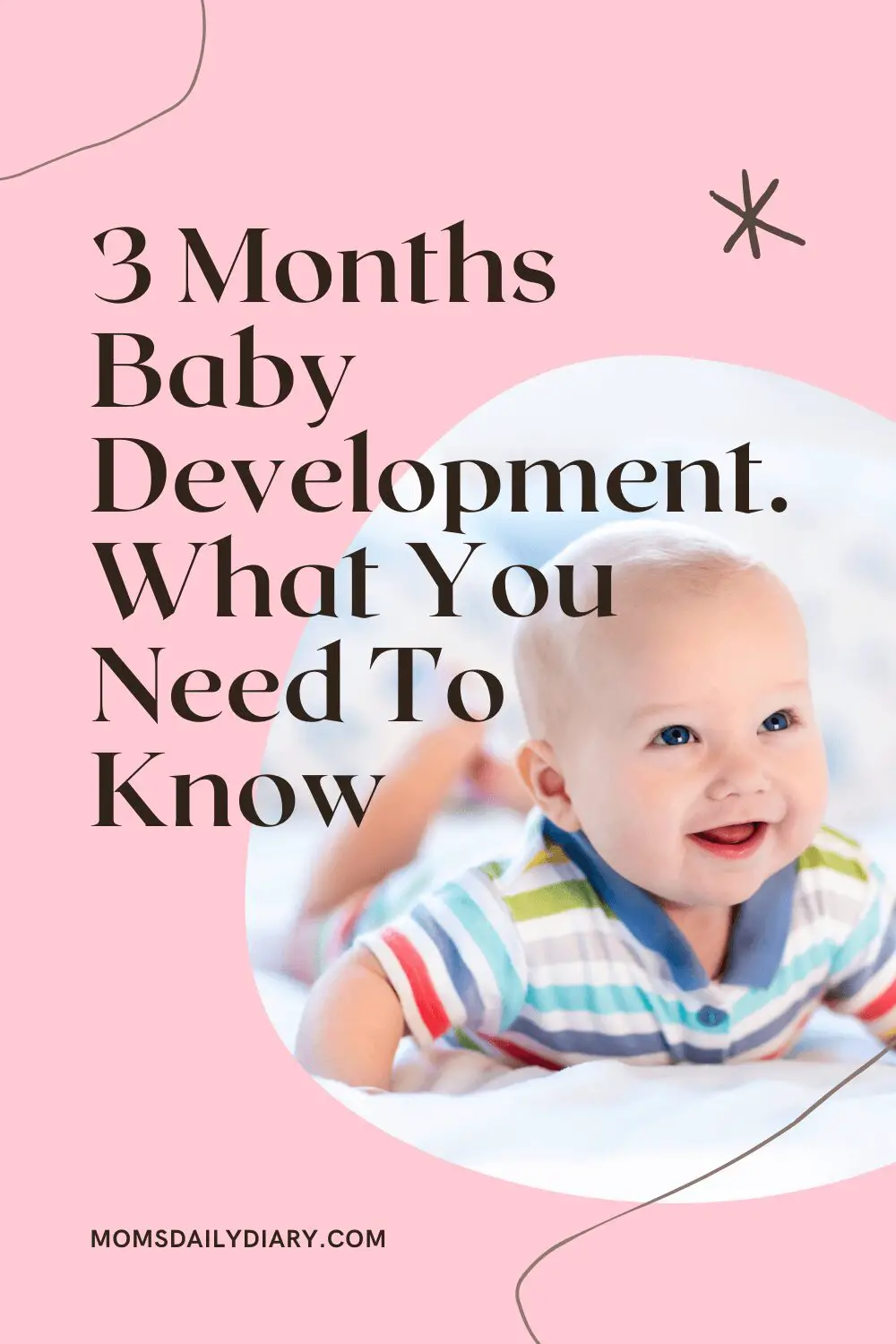
Introducing routines
3 months old is a good time to start working around putting your baby on a schedule.
However, don’t imagine that everything should be followed to the minute. A schedule will just bring repeatability in your day and make things predictable (which is comforting for the baby and convenient for mom).
Here are some things to consider when creating your daily routine:
- Don’t push it. Babies need time to adjust to anything new, so try to create the routine around your current schedule and be patient.
- Plan enough naps. Your baby will be way too fussy if they haven’t had enough sleep. So if your baby is eating 6 times a day, for example, plan 3 longer naps (morning, noon, early afternoon) and one shorter in the late afternoon.
- Playtime and exercises. They are very important for your baby’s development, so include at least 2-3 slots for such activities. 20 minutes of play before a nap can help them sleep even better.
- Plan a daily walk. Get some fresh air by adding a walk to your schedule. You can shop for groceries or go to the park. Either way, your baby will enjoy the time outside.
- Stick to bath and bedtime. Try to get them in the bath and bed at the same time every evening. Introducing a strict bedtime routine this early on will help you avoid drama when they become a toddler.
How do you play with your 3-month-old baby?
Tummy time
Did your baby use to cry when you turned them on their tummy?
There is a high chance that they’ll actually enjoy it now. That’s what happened with both my kids.
At this point, your baby should be able to hold their head up to 90° during tummy time, while they support their upper body with their hands.
Want to make tummy time a bit more interesting? Put a small, lightweight toy in front of your baby and just out of their arms reach. Eventually, they will start trying to reach for it.
Hand-eye coordination
Since your baby’s hearing and sight have improved significantly, they will be fascinated with bright coloured and high contrast toys and rattles. Your little one will soon be able to grab a toy and put it in their mouth, so keep them at an arm’s length.
At this age, baby mats and activities centres are proving to be quite useful for practising their hand-eye coordination. However, if they are still unable to grab the toy, help them by putting one in their hand.
Another thing that 3-month-old babies adore is faces. If you get close enough, instead of just smiling back, they will also reach for your nose, mouth, and/or hair. Let them and help them, since this is their way of exploring the world.
Communicating
Your 3 months baby development marks the end of the notorious fourth trimester. So congratulations! Your little one is slowly becoming their own person.
Thus, you may be glad to know that crying is no longer your baby’s main communication method. Instead, you can now expect frequent smiles, coos, and vowel sounds like ah and oh.
To help them progress further, talk to them as much as you can. Explain in simple words what are you doing now, what are you going to do next.
Use a lot of facial expressions because your baby likes to study them and will soon start to form their own expressions and gestures.
3-months baby development milestones
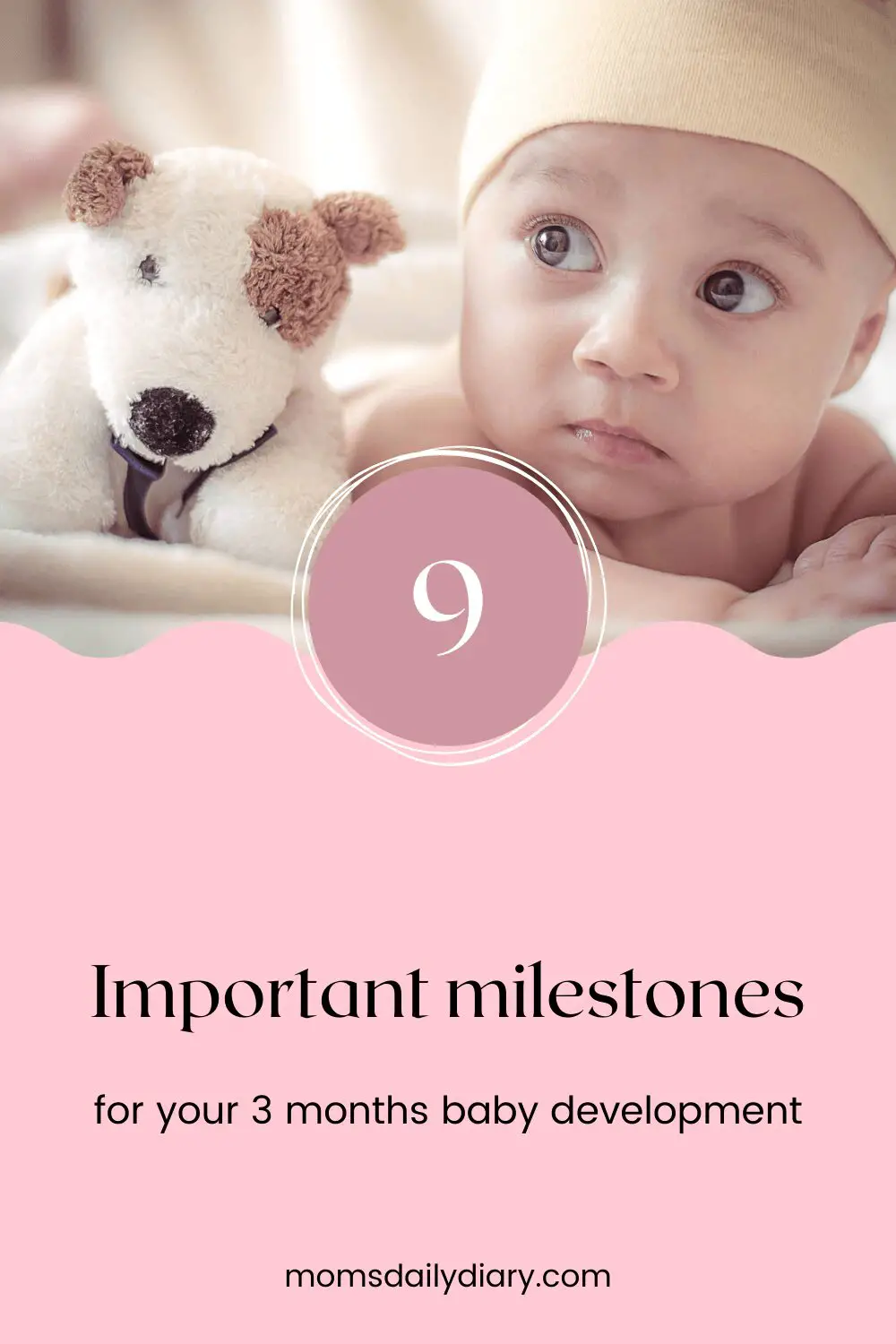
All babies are different, I just cannot stress this enough. So if your baby is not meeting any of this month’s milestones, don’t be quick to worry. The milestones listed below are intended as a guide only. If you’re worried your baby is still missing any of the previous milestones, be sure to talk to their healthcare provider.
- Raising head and chest. When lying on their tummy, babies should now be able to support their upper body with their arms and raise their head and chest up to 90°.
- Kicking enthusiastically. While on their back or tummy, babies should be able to kick and stretch their legs.
- Pushing down on their legs. When you hold them upright over a firm surface, the baby should be able to push down on their legs.
- Puts hands in their mouth. Whether it’s their thumb or the whole fist, this is your baby’s way of exploring their body.
- Coordinates their hands and eyes. The baby will now try to catch and shake different small toys instead of just looking at them.
- Follows moving objects. While they can follow objects for a while, they should now be able to follow them at 180°.
- Recognise from a distance. The baby should now be able to recognise you from a distance or by the sound of your voice even before they see you. They could also recognise familiar objects like their formula bottle.
- Enjoys playtime. Your baby now enjoys your attention and may even cry when the play is over.
- Attempts to communicate. Babies do this by cooing and imitating some sounds and facial expressions.
